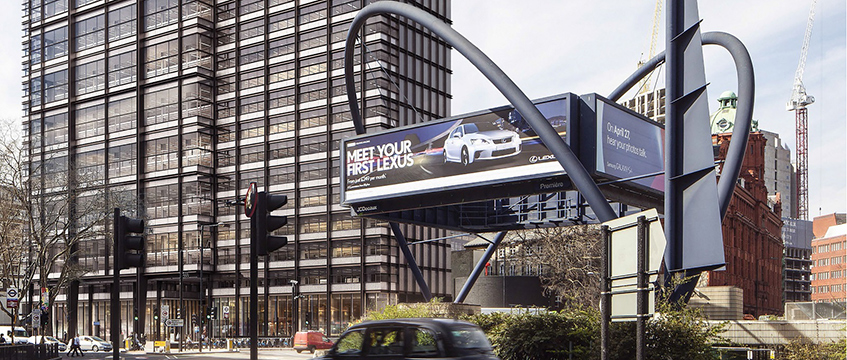Last week was a turbulent one for Helical. Executive director Duncan Walker left abruptly and without explanation and as many as 16% of shareholders lodged their discontent at its remuneration policy at its annual general meeting.
What’s more, the £1.2bn company’s share price is languishing at a 33.3% discount to its net asset value, leading investors and advisers to suggest it could be a take-private target.
The company’s share price is currently sitting at around 308p – a level comparable with 2010. So, amid all this news, what is really going on at Helical and what does its future hold? Chief executive Gerald Kaye explains.
Heading in a new direction
He says Walker wanted to pursue other opportunities. “He has our best wishes,” he says. “He’s a talented chap and we’d like to thank him for what he’s done.”
Others claim Walker held ambitions to be chief executive himself.
Walker’s departure is indicative, however, of the company’s change in strategy. He had been presiding over increasingly non-core aspects of the business, such as retail and retirement villages.
Among his responsibilities was Corby town centre in Northamptonshire. Helical invested £70m in the project in 2011 and then exited for £71.7m, a 7.25% yield, four years later.
The company has since refocused its energies primarily in London office development, with investment income drawn from a £156.6m logistics portfolio. It has been a net seller of retail and is slowly exiting retirement villages, too.
By March next year, the company intends for its portfolio to be made up of 75% London offices, and only 7-8% of the portfolio will be non-core. One company source described the ambition as to become a “mini Derwent London”.
Despite this newly transparent and simplified strategy, its share price has been falling – from 348p a share in May to 311p today, although it has recovered from 291p a fortnight ago. This new focus is also a possible explanation for the heavy discount to NAV – the biggest in the sector currently.
Other London-focused companies are also carrying discounts – Derwent London is at around 17% and Great Portland Estates around 21%.
An unknown quantity
A punt on Helical shares is increasingly a punt on central London office leasing activity that the market has judged bearishly post-EU referendum, although Central London’s leasing market has seen a strong start to the year, with nearly 4.8m sq ft let in the first two quarters – a 10% increase on the previous year.
Helical is in the habit of derisking its schemes with players such as HOOPP and Ashby Capital, and taking the development profits. This makes it unlike comparable REITs such as Derwent and Great Portland Estates, which, as REITs, are more likely to keep larger stock holdings on their balance sheet.
But it still has relatively large exposure to office development risk, with £788.3m invested in London offices and residential.
Kaye says: “We are trading at a discount, as is much of the sector. We are not normally. We are normally at a premium and we intend to get back to this. The business is far more focused than it has ever been. The feedback from the analysts is that we are more transparent than we have ever been.
“We are not sitting on our hands, we are trying to invest wisely in enduring assets. We believe we are in a flat market and so we have to work really hard to drive value. The point is that we have got the upside.”
That upside is heavily concentrated, and the appetite for such big development exposure among investors is somewhat unproven, with the biggest demand in London for trophy standing investments.
The acid test will be next summer, when the company’s biggest solely owned asset – The Bower on Old Street Roundabout, EC1 – is due to complete.
The company will be eager for it to be fully let by then and the subsequent valuation or sale price if it looks to dispose of it will be a crucial yardstick.
In 2015, the company bought out its joint venture partner Crosstree in a £248m deal. The 122,000 sq ft first phase is fully let and the 171,200 sq ft second phase is 30% prelet to WeWork.
A source close to the company says: “The NAV could be £5 plus in 18 months [473p as per 31 March] but right now people don’t want to take the letting risk.”
“That is just a sign that people are genuinely rightly proportioning risk and reward.”
Probably as much as any property company, the fortunes of central London’s economy will therefore be mirrored by the fortunes of Helical.
JP Morgan analysts have rated Helical shares as a “buy” because the discount to NAV is so acute. Could this be a moment in time for the company’s management to look at taking it private?
Not according to Kaye. “We are a publicly owned company and we believe it is the right place for us to be,” he says. “We want to continue being public, and we enjoy it.”
When it comes to the shareholder discontent on pay it is because Kaye’s total pay, including share awards, for the year to the end of April this year was £2.6m.
He claims the amount is due to deferred payments for profit made three to five years ago.
“I think the remuneration is very much based on results, and we made a lot of money doing a few deals: White City, 200 Aldersgate,” he says. “It’s feast and famine sometimes. It was a way of spreading the feast. A lot in shares and deferred bonuses.”
Slade may now be hands off, cruising around on his yacht in the America’s Cup, but for Kaye, being at the helm of Helical right now is hardly plain sailing.
To send feedback, e-mail nick.johnstone@egi.co.uk or tweet @n_johnstone or @estatesgazette











